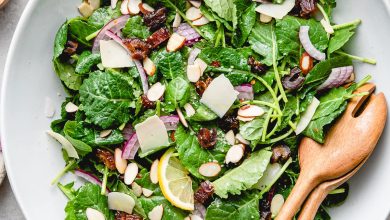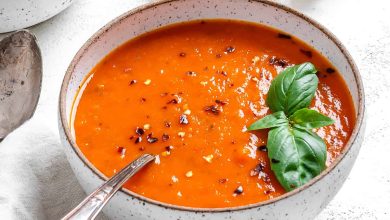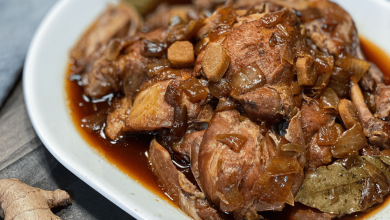An “All in One Breakfast” is a hearty and filling meal that typically combines a variety of breakfast components into a single dish. It’s a convenient option for those who want a substantial breakfast without the need to prepare multiple separate items. Here’s a detailed breakdown of your questions:
What is it?
An “All in One Breakfast” is a dish that brings together different breakfast elements into a single serving. It often includes components like eggs, bacon or sausage, potatoes, vegetables, and sometimes cheese or other toppings. The idea is to have a complete and satisfying breakfast in one dish.
History:
The concept of an all-in-one breakfast is not tied to a specific historical event or origin. It’s more of a practical and culinary adaptation to suit busy mornings and varied breakfast preferences. Various cultures have their own versions of hearty breakfast dishes that might fall under this category.
Components:
The components of an All in One Breakfast can vary, but common ingredients include:
- Eggs: Scrambled, fried, or poached eggs are often used.
- Protein: Bacon, sausage, or ham are popular choices.
- Potatoes: Hash browns or diced potatoes add a hearty element.
- Vegetables: Bell peppers, onions, tomatoes, and spinach are commonly included.
- Cheese: Cheddar, Swiss, or other cheese varieties can be melted on top.
- Seasonings: Salt, pepper, and herbs like parsley or chives for flavor.
- Optional Additions: You can customize it with ingredients like mushrooms, avocado, or salsa, depending on your preference.
Steps to Prepare:
Here’s a basic step-by-step guide to preparing an All in One Breakfast:
- Prep Ingredients: Chop and prepare all your ingredients beforehand.
- Cook Potatoes: Heat a skillet with oil and cook the diced potatoes until they’re golden brown and crispy. Remove and set aside.
- Cook Protein: In the same skillet, cook the bacon, sausage, or ham until it’s cooked through. Remove and set aside.
- Saute Vegetables: In the same skillet, sauté the vegetables until they’re tender.
- Add Eggs: Push the vegetables to the side and add the beaten eggs to the skillet. Scramble them until they’re cooked to your liking.
- Combine: Mix the cooked potatoes, protein, and eggs together in the skillet. Top with cheese if desired.
- Season: Season the dish with salt, pepper, and any desired herbs or spices.
- Serve: Plate your All in One Breakfast and enjoy!
Time Needed:
The time required to prepare an All in One Breakfast can vary based on your cooking skills and the number of components you include. On average, it might take around 20-30 minutes to cook. However, having your ingredients prepped in advance can significantly reduce cooking time.
Remember that the specific recipe and cooking time can vary depending on the variations you choose for your All in One Breakfast.
Certainly, here’s some nutrition and health information related to an All in One Breakfast:
Nutrition Facts:
The nutritional content of an All in One Breakfast can vary significantly depending on the specific ingredients and portion sizes used. However, here are some general insights into the potential nutritional components:
- Calories: An average serving of All in One Breakfast can range from 300 to 600 calories or more, depending on the ingredients used.
- Protein: This dish can be a good source of protein, primarily from the eggs and any added protein (bacon, sausage, ham).
- Carbohydrates: Carbohydrates come from ingredients like potatoes and vegetables, providing energy.
- Fats: Fats are mainly from sources like bacon, sausage, and cheese, so it can be relatively high in saturated fats.
- Fiber: If you include vegetables, you’ll get some fiber, which is beneficial for digestion.
Health Information:
- Protein: The protein content in an All in One Breakfast can help keep you feeling full and satisfied throughout the morning.
- Vitamins and Minerals: Depending on the vegetables used, you can get various vitamins and minerals like vitamin C, vitamin A, potassium, and folate.
- Fats: Be mindful of the fat content, especially if you use fatty meats like bacon and sausage. While fats are essential for the body, it’s advisable to choose leaner options.
- Sodium: Some ingredients, like bacon and sausage, can be high in sodium, so consider low-sodium alternatives if you’re watching your salt intake.
- Customization: You can make this dish healthier by incorporating more vegetables and choosing leaner protein sources. You can also use less cheese or opt for lower-fat cheese varieties.
As with any meal, moderation and ingredient choices play a crucial role in its overall healthiness. Customizing your All in One Breakfast to include more nutritious ingredients and watching portion sizes can make it a balanced and satisfying breakfast option.








